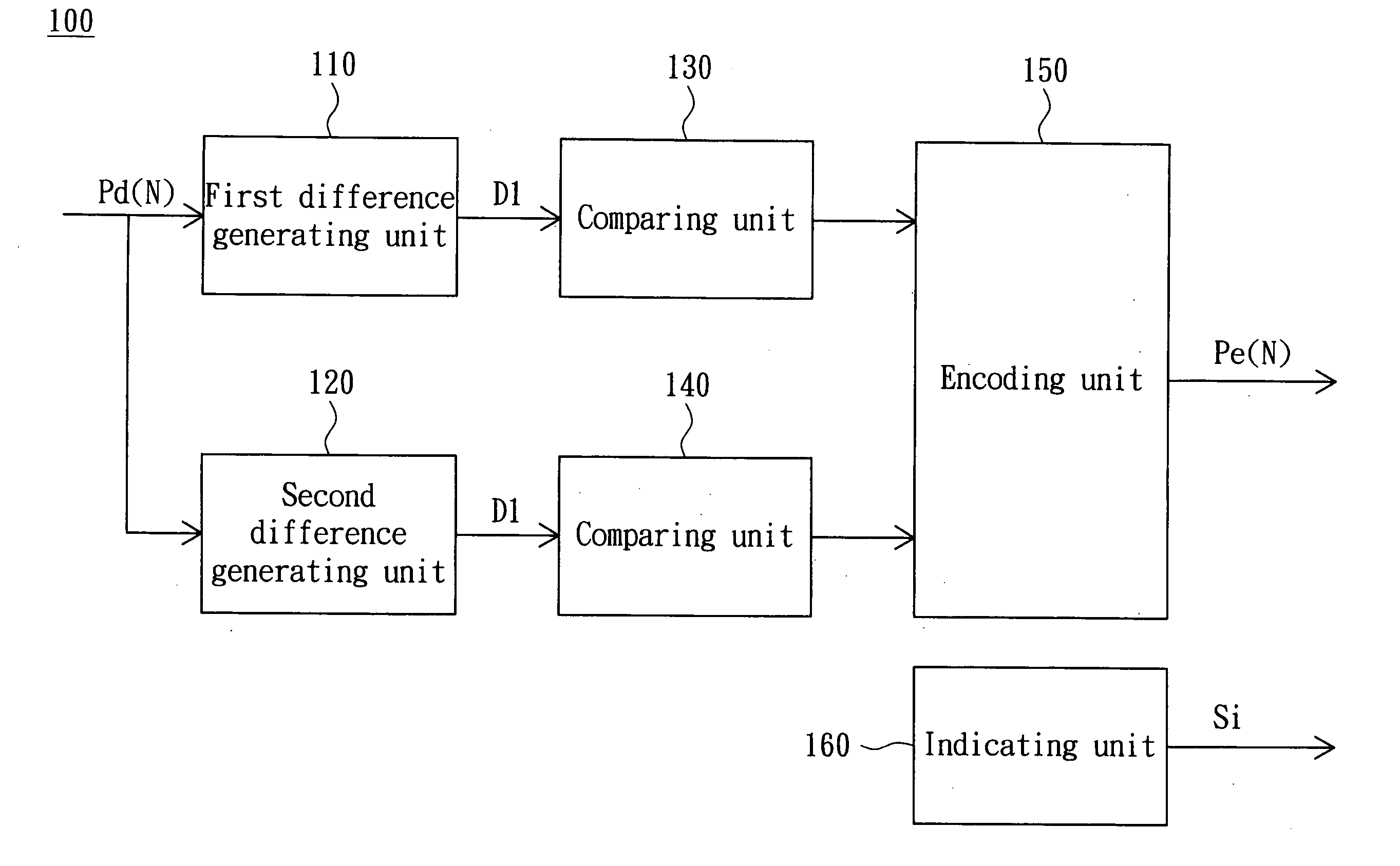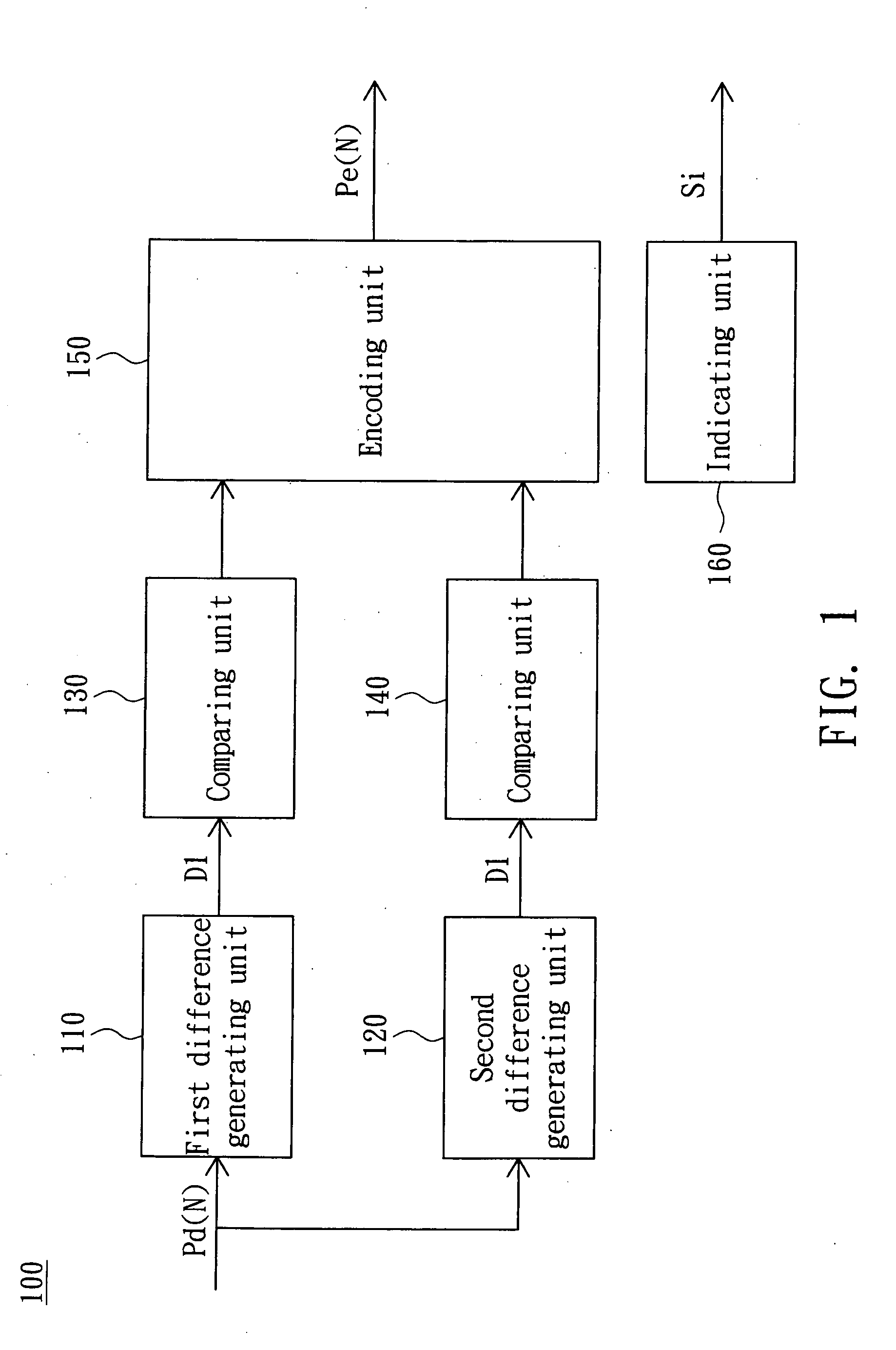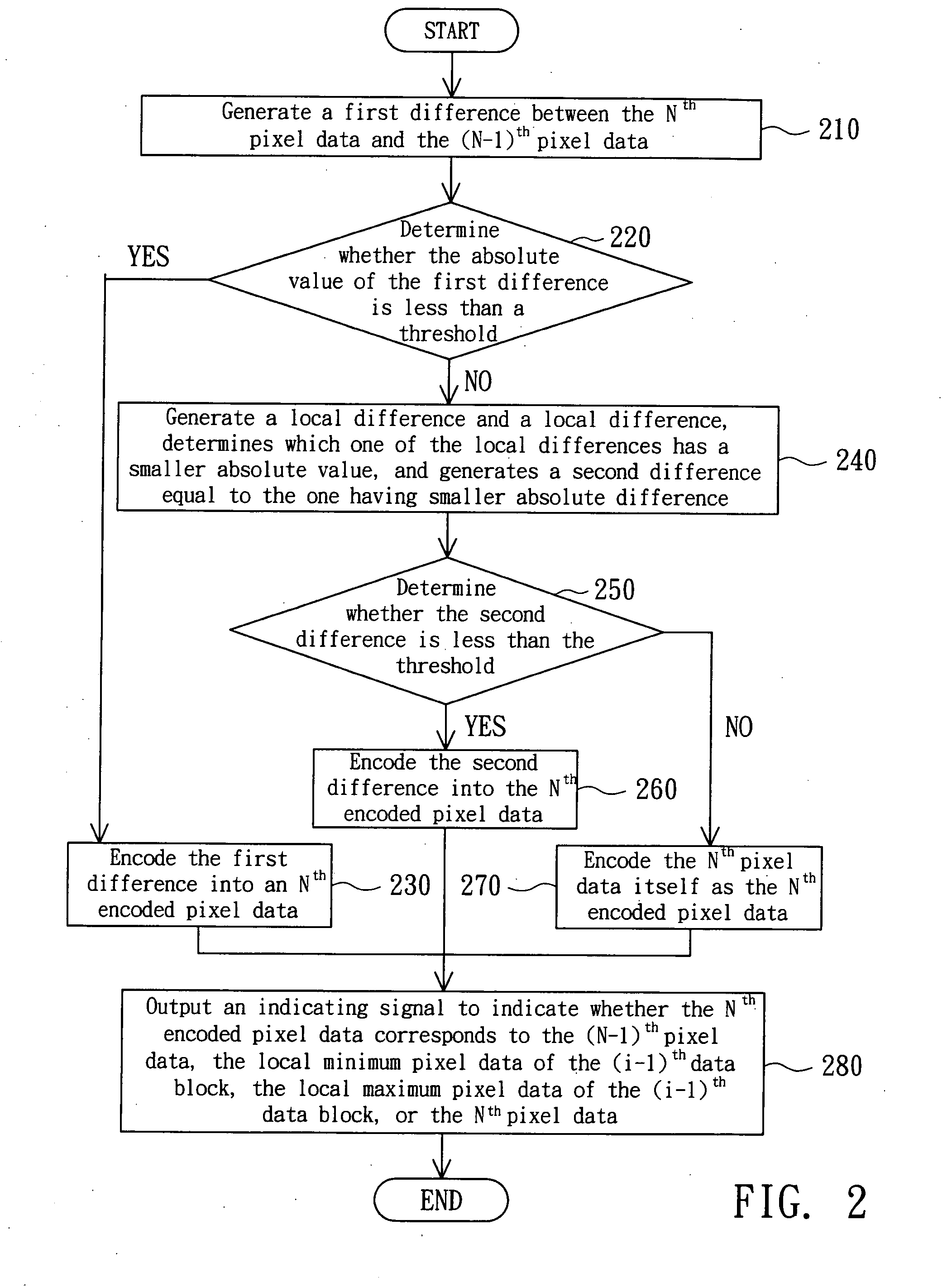Encoder and decoder for encoding and decoding pixel data with low amount of transmitting data, encoding method, and decoding method thereof
a technology of pixel data and encoding method, which is applied in the field of encoding method and decoding method of encoding and decoding pixel data, and can solve the problems of large amount of data to be transmitted and require a high bandwidth of the transmission channel
- Summary
- Abstract
- Description
- Claims
- Application Information
AI Technical Summary
Benefits of technology
Problems solved by technology
Method used
Image
Examples
example 1
[0041]In example 1, the pixel data Pd(9) and its previous pixel data Pd(8) are assumed to be equal to grey level values 127 and 129, respectively, which are in the range 0 to 255. To encode the pixel Pd(9), the first difference generating unit 110 in the encoder 100 generates the first difference D1 between the pixel data Pd(9) and Pd(8), which here equals −2 (127-129). The comparing unit 130 then decides whether the absolute value of the first difference D1 is less than the threshold, which is set to 4. Thus, the encoding unit 150 encodes the first difference D1 into the encoded pixel data Pe(8) according to the code table 500.
[0042]Refer to FIG. 5, the difference −2 corresponds to a code 011. Therefore, the encoding unit 150 encodes the first difference D1 into the encoded pixel data Pe(8), which is the code 011. The indicating unit 160 then outputs the indicating signal Si which indicates that the encoded pixel data Pe(8) corresponds to the pixel data Pd(7). Thus, the encoder 100...
example 2
[0046]In example 2, the pixel data Pd(9) and its previous pixel data Pd(8), the local maximum pixel data Pmax(1) and the local minimum pixel data Pmin(1) of the data block Db(1) is assumed to be equal to grey values 127, 120, 140 and 126, respectively. To encode the pixel data Pd(9), the first difference generating unit 110 in the encoder 100 generates the first difference D1 between the pixel data Pd(9) and Pd(8), being equal to 7 (127-120). The comparing unit 130 then decides whether the absolute value of the first difference D1, is not less than the threshold. Thus, the encoding unit 150 does not encode the first difference D1.
[0047]Meanwhile, the second difference generating unit 120 in the encoder 100 generates the local difference Dmax equal to −13 (127-140) and the local difference Dmin equal to 1 (127-126). Since the absolute value of the local difference Dmin is less than the local difference Dmax, the second difference generating unit 120 thus generates the second differen...
example 3
[0053]In example 3, the pixel data Pd(9), its previous pixel data Pd(8), the local minimum pixel data Pmin and the local maximum pixel data Pmax of the data block Db(1) are assumed to be equal to grey levels 127, 140, 120, and 152, respectively. To encode the pixel data Pd(9), the first difference generating unit 110 in the encoder 100 generates the first difference D1 between the pixel data Pd(9) and Pd(B), which is −13 (127-140). The comparing unit 130 then decides whether the absolute value of the first difference D1, −13, is not less than the threshold, which is set to 4. Thus, the encoding unit 150 does not encode the first difference D1.
[0054]Similarly, the second difference generating unit 140 in the encoder 100 generates the local difference Dmax, 7 (127-120), and the local difference Dmin, −15(127-152). The second difference generating unit 140 then generates the second difference D2 equal to the local difference Dmax. The comparing unit 140 then decides that the absolute v...
PUM
 Login to View More
Login to View More Abstract
Description
Claims
Application Information
 Login to View More
Login to View More - R&D
- Intellectual Property
- Life Sciences
- Materials
- Tech Scout
- Unparalleled Data Quality
- Higher Quality Content
- 60% Fewer Hallucinations
Browse by: Latest US Patents, China's latest patents, Technical Efficacy Thesaurus, Application Domain, Technology Topic, Popular Technical Reports.
© 2025 PatSnap. All rights reserved.Legal|Privacy policy|Modern Slavery Act Transparency Statement|Sitemap|About US| Contact US: help@patsnap.com



